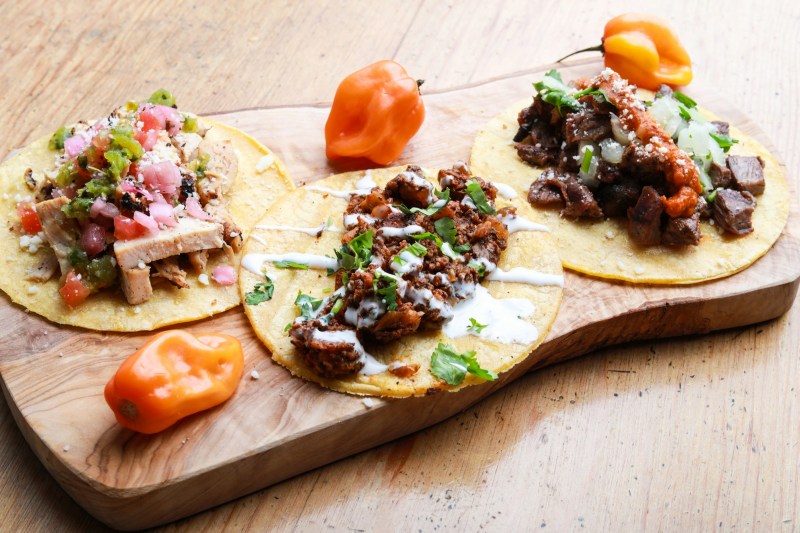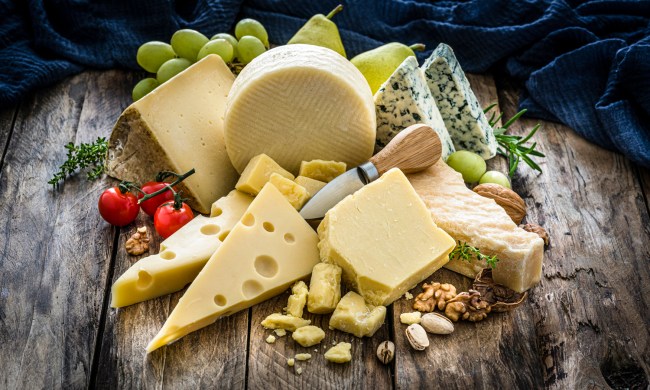This is going to sound somewhat blasphemous, but hear me out. Until I was well into my teen years, I didn’t think I liked tacos. It’s hard to believe now, but I insisted that this beloved food just wasn’t for me. This is because, like many American children, I had only been exposed to ground beef tacos, seasoned with a grocery store spice packet, topped with bagged lettuce and pre-shredded cheddar. Not to bash this classic culinary staple of my fellow ’80s babies, but those aren’t true tacos, and I will die on that hill.
It wasn’t until a high school class trip to Mexico that I had the real thing, and I realized I’d been duped. It was love at first bite. This certainly isn’t to say that all tacos must be strictly authentic or even Mexican-inspired. Heavens no. When I discovered my love for what tacos could be, I couldn’t experiment enough with new ingredients and flavors. Having only had the one (rather lazy) version, I didn’t realize how much potential these beautiful little flavor pockets had.
So if you, too, have a little childhood taco trauma, these are some of the best ways to recover.

Marinate your meat (and stop using ground beef)
My hatred for ground beef tacos may be a controversial take, and at the end of the day, there might be a nostalgic attachment that draws you back to this ingredient time and time again. That’s fair. But if you do decide to branch out (and you should), marinating your meat – no matter what kind it is – is a step you shouldn’t skip.
Good marinades are made of three simple components – oil, acid, and flavoring agents. Using a 3:1 ratio (3 parts oil to 1 part acid), these elements work together to tenderize and amp up the flavor of your protein. Get creative with your flavors and consider what you’ll be serving with and on your tacos for marinade flavor inspiration.
Oil options: Olive, canola, vegetable, peanut, etc.
Acid options: Citrus juices, wine, vinegar, soy sauce, etc.
Flavor options: Garlic, dried or fresh herbs, spices, etc.

Make your own tortillas
This step may seem daunting, but homemade tortillas are truly one of the easiest things to make and taste so much better than the packaged version. There’s really nothing better than a warm, homemade tortilla straight out of the skillet. Make a big batch and fry the leftovers for homemade tortilla chips!
Ingredients
- 2 cups masa harina
- 2 cups hot water
- 1 teaspoon fine sea salt
Method
- In a large mixing bowl, combine masa harina and salt.
- Slowly stream in the hot water a little bit at a time, stirring until a dough begins to form.
- Keeping the dough inside the bowl, knead until smooth and springy, about 2-3 minutes. If it feels too dry, mix in a little bit more hot water.
- Cover the bowl with a damp kitchen towel and rest for 10 minutes at room temperature.
- Portion the dough into 2-inch balls, rolling to form evenly in your hands.
- Working one at a time, place each ball between two pieces of plastic wrap, and press into a flat tortilla using either a tortilla press or a heavy skillet.
- Over medium heat, cook the tortillas for about 45 seconds per side.
- Enjoy!

Use pickled onions instead of raw
This is one upgrade that takes almost zero additional effort. Raw, chopped onions are a favorite topping on most taco buffets, and for good reason. We love the added crunchy zip of a crisp, fresh onion. But if you’ve ever tried a pickled onion on a taco, you’ll never want anything else. The added vinegar punch and zesty flavor of a pickled onion are beautiful on tacos and really take them to another level. Of course, you can buy pickled onions, but making your own is ridiculously simple. You can learn how to do it here.

Consider different proteins
Now that we’ve set aside the ground beef (for the love of God, stop using ground beef in your tacos), have fun with all of the creative choices you have! Of course, there are the standards we all know and love – chicken, shrimp, and fried fish all make exceptional taco fillings, but why stop there? Get creative with dishes like barbecue pulled pork tacos or Korean barbecue tacos. We really love the idea of a fresh and citrusy poke bowl taco. Don’t limit yourself!
Tacos are also a great way to get in a vegan or vegetarian meal without missing out on flavor. Ingredients like beans, chickpeas, roasted squash, and meaty mushrooms all make delicious taco fillings.

Think beyond the bagged lettuce
In our humble opinion, shredded iceberg lettuce has no business inside a taco, but we’re not here to topping shame. Instead of iceberg, try green cabbage or even coleslaw to top your taco. You’ll still get a fresh, green crunch, but with a whole lot more flavor. And instead of that bagged, pre-shredded cheddar, try a crumbled cheese like feta or even gorgonzola. Cheese is a great way to pack a punch and bring that delicious funk.
For a little added bulk, try roasted vegetables like carrots, potatoes, or bell peppers. This will add not only flavor but beautiful color and a whole lot more vitamins and nutrients than just some lackluster lettuce.
Open your fridge and check out those jars inside the door shelves. That’s the place you’ll find some great taco topping inspiration. Fruit salsas, kimchi, chili oils, and even salad dressings are all great ways to give your tacos a little pizzazz.




